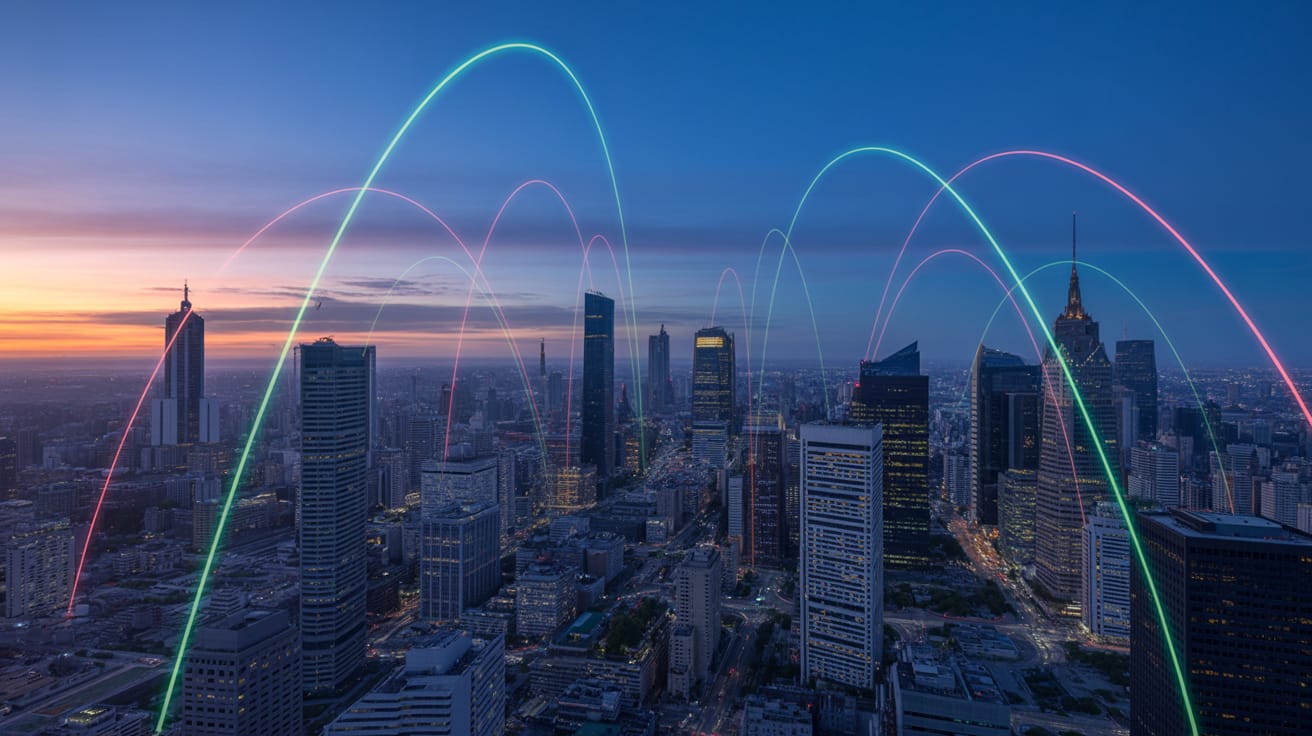Upload Speed, Download Speed, and Pings: What It All Means

Ever wonder why your phone sometimes feels blazing fast, and other times like it's trudging through mud? It's not always about having the "best" phone; often, it comes down to the underlying network performance.
While terms like "5G" and "coverage" get a lot of attention, understanding a few key metrics can truly empower you to grasp your mobile experience.
Let's break down the essential performance indicators that dictate how smoothly your phone handles everything from streaming to gaming:
1. Download Speed
What it is: Download speed measures how quickly data can be received by your device from the internet. Think of it as the speed at which information flows to your phone. It's typically measured in Megabits per second (Mbps). The higher the number, the more data your phone can pull down in a given second.
Why it matters: This is the big one for most everyday activities. Higher download speeds mean:
- Smooth Streaming: High-definition video (like Netflix, YouTube, or TikTok) loads quickly and plays without buffering. For standard HD (1080p), you'll generally want at least 5-10 Mbps, while enjoying crystal-clear 4K streaming demands a more robust connection, typically 25 Mbps or more. If you're sharing your connection with others, each streaming device will require its own share of that download speed.
- Fast Web Browse: Websites, images, and articles pop up almost instantly, making your online research or casual scrolling a breeze.
- Quick Downloads: Large files, apps, or game updates finish in a flash, saving you time and frustration. Imagine downloading a new mobile game that's several gigabytes – a faster download speed makes a world of difference.
In simple terms: The more download speed you have, the less time you spend waiting for content to appear on your screen, translating to a more fluid and enjoyable digital experience.
2. Upload Speed
What it is: Conversely, upload speed measures how quickly data can be sent from your device to the internet. This is the rate at which your phone transmits information. Also measured in Mbps, upload speeds are generally lower than download speeds, but are becoming increasingly important in our interactive digital world.
Why it matters: While often overlooked, upload speed is crucial for:
- Flawless Video Calls: Sending your video and audio feed clearly during video conferences (Zoom, FaceTime, Google Meet). Without sufficient upload speed (generally 10 Mbps or more for HD video calls), your video might appear blurry, pixelated, or choppy to others, leading to frustrating communication.
- Sharing Content: Uploading photos and videos to social media platforms (Instagram, TikTok, YouTube), backing up files to cloud storage (Google Drive, Dropbox), or sending large email attachments quickly and efficiently. If you're a content creator, a good upload speed is non-negotiable.
- Online Gaming (to an extent): While latency (ping) is king for responsiveness in gaming, adequate upload speed ensures your in-game actions and communications (like voice chat) are registered by the server without delay. Competitive gamers often aim for at least 10 Mbps upload for optimal performance.
In simple terms: Good upload speed ensures your contributions to the online world – whether it's your face on a video call or a newly uploaded photo album – are smooth and uninterrupted.
3. Latency (Ping)
What it is: Often referred to as "ping," latency measures the time it takes for a tiny data packet to travel from your device to a server and back. It's the "round-trip time" (RTT), measured in milliseconds (ms). Unlike speed, which is about how much data moves, latency is about how quickly your connection responds.
Why it matters: Lower latency indicates a more responsive network, which is critical for real-time applications where even tiny delays can significantly degrade the user experience:
- Online Gaming: This is where latency shines. A low ping (e.g., under 50ms) means your button presses translate into in-game actions almost instantly, giving you a smooth and competitive experience in fast-paced games like first-person shooters or racing games. A ping under 20ms is considered excellent for competitive gaming. High latency (over 100ms) can lead to noticeable "lag," where your character seems to move a beat behind your commands, making precise actions difficult and frustrating.
- Live Video Calls: Low latency reduces awkward pauses, delays, and people talking over each other. It makes conversations feel more natural, immediate, and fluid, mimicking in-person interaction more closely.
- Interactive Web Browse: While download speed gets the content to you, low latency makes interacting with webpages feel snappier. Clicking a link, typing in a search bar, or filling out a form feels immediate, enhancing overall user satisfaction.
In simple terms: Latency is the delay. The lower the number, the more instantaneous your online interactions feel, making your digital life feel seamless and responsive.
Bringing It All Together
Think of your mobile internet connection like a multi-lane highway:
- Download Speed is how many lanes are coming to you and how fast traffic flows in those lanes. More lanes and faster traffic mean more content arrives at your device quickly.
- Upload Speed is how many lanes are going from you and how fast traffic flows in those lanes. This dictates how quickly you can send your own data out to the internet.
- Latency (Ping) is the time it takes for a single car to travel from your location to a destination and back, no matter how many lanes there are. Even with many lanes (high bandwidth/speed), if there are a lot of speed bumps or traffic lights (high latency), things will still feel slow and delayed.
Final Tips
When choosing a cell phone plan, look beyond just advertised "speeds." Consider what those core metrics—download, upload, and latency—mean for your daily habits. A carrier with top download speeds might be ideal for streaming, but gamers and frequent video callers will prioritize consistently low latency and strong upload performance.
Enjoyed this article? Read more articles and guides at shopcellplans.com.

